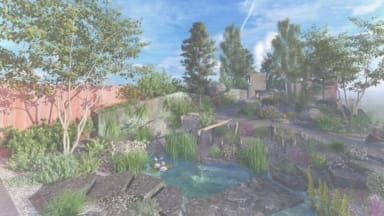
Supported by Project Giving Back, the garden has been designed by the award-winning garden designer Matthew Childs. Childs, returns to Chelsea ten years since his debut on main avenue in 2014.
Growing up in the 1980s, Matthew vividly remembers the fear he felt when he realised he was gay, saying: ‘HIV has touched and impacted our community greatly, and since my teenage years I have been conscious of the abhorrent stigma associated with the virus. The recent response to COVID, in which people came together to overcome the challenges presented by a new deadly pandemic, highlighted to me what was possible and reawakened my desire to help. We need to get the message out about all the progress that’s been made in HIV that makes ending new cases an achievable goal.’
The garden for RHS Chelsea is an opportunity to convey all the progress made in HIV and the work of Terrence Higgins Trust. ‘We’re thrilled to have the opportunity to tell everyone how much HIV has changed in the last 40 years through our Terrence Higgins Trust Bridge to 2030 Garden at next year’s Chelsea,’ says Chief Executive of the Trust, Richard Angell.
The entrance to the garden is reminiscent of the flooded base of a rejuvenated quarry landscape. The water level rises and falls, revealing a monolith slate stepping stone creating a bridge to the 2030 vision of no new HIV cases. The tombstone, which once represented death and fear, is now a crossing into the garden, with the destination being a secluded terrace in which to enjoy a positive, hopeful future together.
Granite boulders are scattered through the garden, inspired by those found in the slate landscapes of North Wales. One of these boulders balances precariously from the raised bed on the boundary, looking as though it is about to fall. Beneath it, fragile sticks give the illusion they are supporting the weight of the boulder – an analogy for those lost to HIV and those who have played a role in supporting the response to the virus.
The planting in the garden is inspired by the re-colonisation of plants in the redundant slate mines of North Wales, by both nature, and from the subtle intervention of ecologists and horticulturalists.
The build will be managed by Yoreland Design Ltd.

